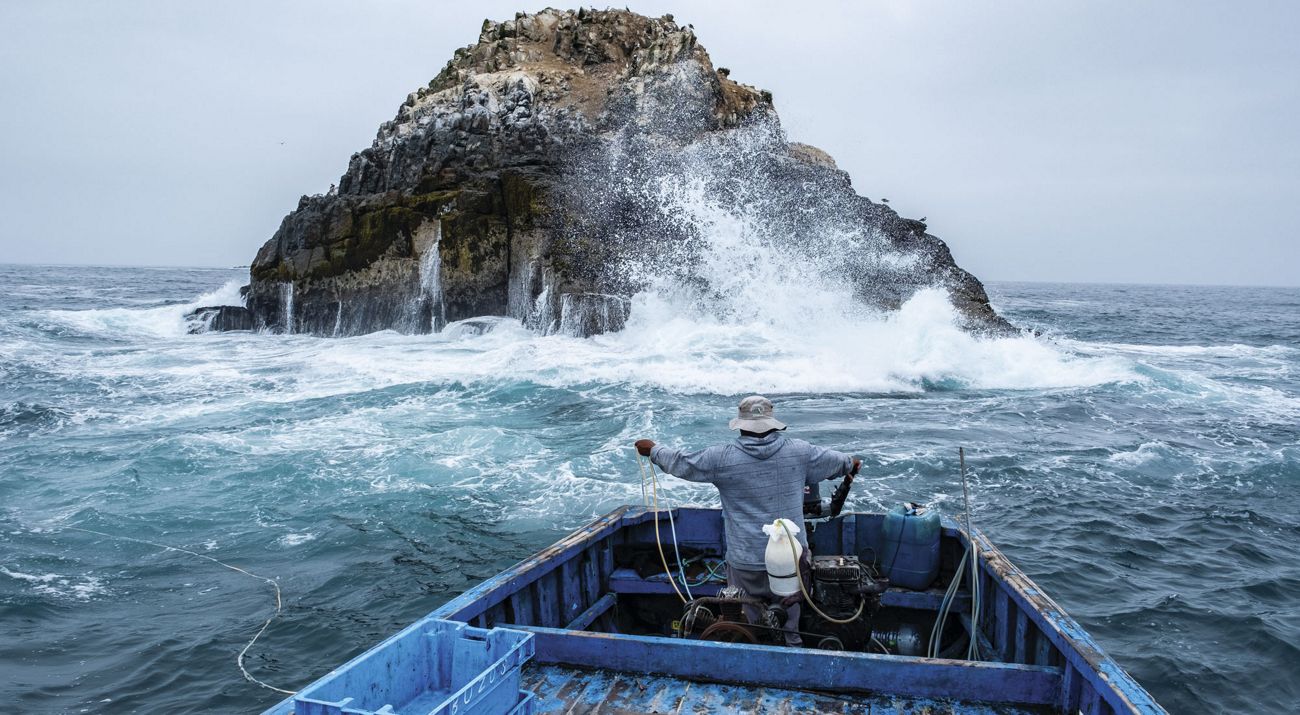When fish populations start crashing in areas with few restrictions, it’s up to fishers to decide if they want to race to take what’s left or change their practices. In 2015, the fleet of wooden fishing boats that sets out each morning from the Peruvian town of Ancon had been catching less of just about everything—octopuses, sea snails and crabs. For these dive fishers, a smaller catch means they earn less—and they needed to find a fix. They started to enact voluntary management measures to recover their fisheries, and then found a solid science partner in The Nature Conservancy, who introduced them to FishPath.
FishPath is an innovative scientific decision-making process designed by TNC and partners to help local communities and government agencies renew and protect their fisheries.
Hundreds of millions of people worldwide rely on fisheries for their livelihoods. But overfishing and mismanagement are a problem in more than a third of the Earth’s fisheries. Most of those fisheries are unregulated without the support of sound science. Collecting information on the status of fish stocks—factors like fish size and reproduction rates—takes time, effort and expertise. For many communities, even basic data collection has been out of reach.
FishPath is a program that enables TNC staff and communities to evaluate the distinctive features of their fishery, as well as any available data, and then suggest options for management. “For many small-scale fisheries, FishPath opens a window for them to get concrete plans in place,” says Carmen Revenga, TNC’s sustainable fisheries strategy lead. “It gives them a path forward.”
An important part of FishPath is building trust with local fishers and supporting communities as they manage their own fisheries. In Ancon, local fishers worked with TNC staff to craft a community-based fishery management plan that included setting size limits and temporarily closing some local fishing spots to allow populations to rebound. Those decisions, paired with leadership and market incentives, helped improve the populations and local catch of snails and crabs in just one year.
These results led to FishPath being adopted by Peru’s Ocean Institute (IMARPE) to implement sustainable management of 30 priority species nationwide; and IMARPE is already introducing FishPath to artisanal fishers in Lorna, Cabinza, Pejerrey, Liza, and Bonito—five of the most important, small-scale Peruvian fisheries by catch volume.
Ancon provides a strong example of how science and technology, coupled with community engagement, transparency and trust-building have led to healthier results for the fisheries and the communities that rely on them.
Between TNC and partners, FishPath is in use in about a dozen countries around the world, including Chile and Mexico.
Quote: Carmen Revenga
For many small-scale fisheries, FishPath opens a window for them to get concrete plans in place. It gives them a path forward.


